Gold price forecast to rise to $3,000/ounce
UOB Bank experts have just forecast that gold prices will reach $2,700/ounce by mid-2025 and then $3,000/ounce due to geopolitical instability, demand from central banks and expectations of interest rate cuts.
Thus, the forecast of 3,000 USD/ounce (equivalent to more than 92 million VND/tael) for gold price reappeared after the spot gold price on the international market exceeded 2,500 USD/ounce and is holding quite firmly above this threshold. Experts increased the forecast of average gold price to 2,700-2,750 USD/ounce in 2025.
During the trading session on August 29, on the New York market (early morning of August 30, Vietnam time), the spot gold price at one point reached 2,527 USD/ounce.
A little over a week ago, on Kitco, Sabrin Chowdhury, Chief Commodity Analyst at BMI, said that gold is a safe haven and that prices will continue to set new records in 2024.
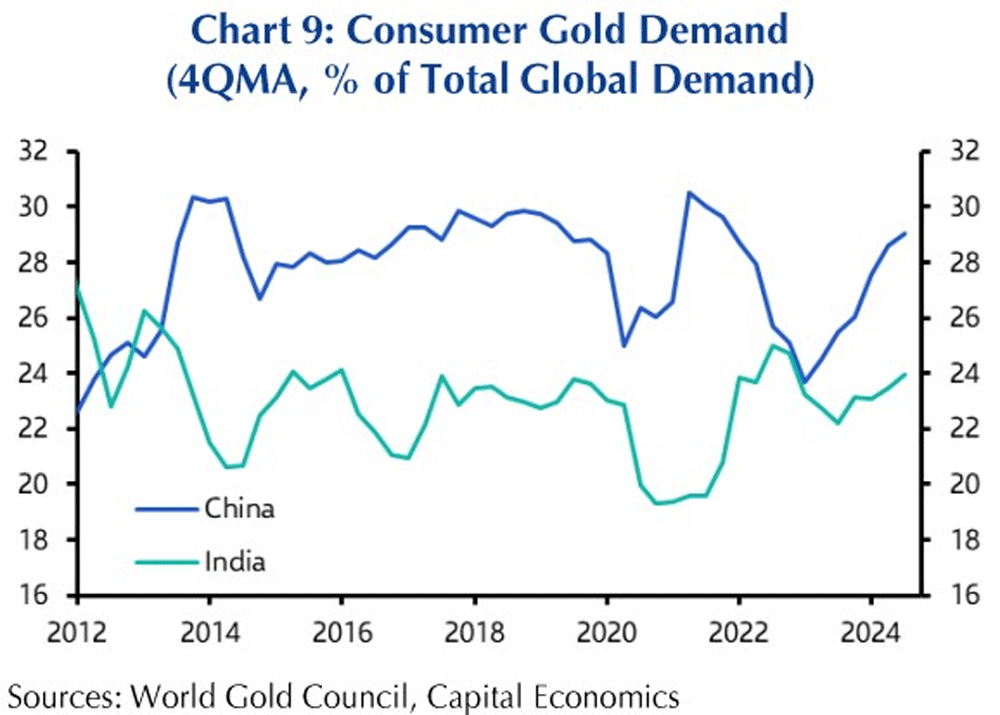
According to Sabrin Chowdhury, when the US Federal Reserve (Fed) starts cutting interest rates (the market is betting on a 100% chance at its September meeting), the price of gold will reach $2,700/ounce (equivalent to VND82 million/tael).
Experts from Citi said that gold is on an upward trend in the next 3-6 months. Gold will reach 3,000 USD/ounce in 2025. The average spot price of gold in the fourth quarter of 2024 is 2,550 USD/ounce.
Experts from BMI believe that 2024 will see a lot of instability from geopolitical tensions in the Middle East, Ukraine - Russia and many important elections, including the race for the White House in the US.
Gold prices are expected to rise further, following more dovish developments on the Fed’s monetary policy. Lower interest rates will put pressure on the USD. The US currency will depreciate.
On Kitco, experts from Capital Economics said that China's gold buying activities will push gold prices up in the next decade, even though it has increased about 20% since the beginning of the year and China has stopped buying gold for 3 consecutive months.
Analysts at Capital Economics said the pause in gold accumulation was only temporary as “China’s gold rush continues” amid rising global tensions, economic uncertainty and continued efforts to move away from the US dollar.
Previously, the People's Bank of China (PBoC) had 18 consecutive months of net gold purchases at low prices. This is considered an important factor pushing the price of this metal up rapidly since the end of 2023.
According to Capital Economics, China’s demand for gold will continue to increase in the coming time as the economy slows down this decade. This will put upward pressure on gold prices and could be the source of greater volatility in the gold market in the coming years.
The main driving force behind gold's rise: Still China?
Not only has the PBoC increased gold purchases, in fact, physical gold demand in China, according to the World Gold Council (WGC), also increased before the pandemic.
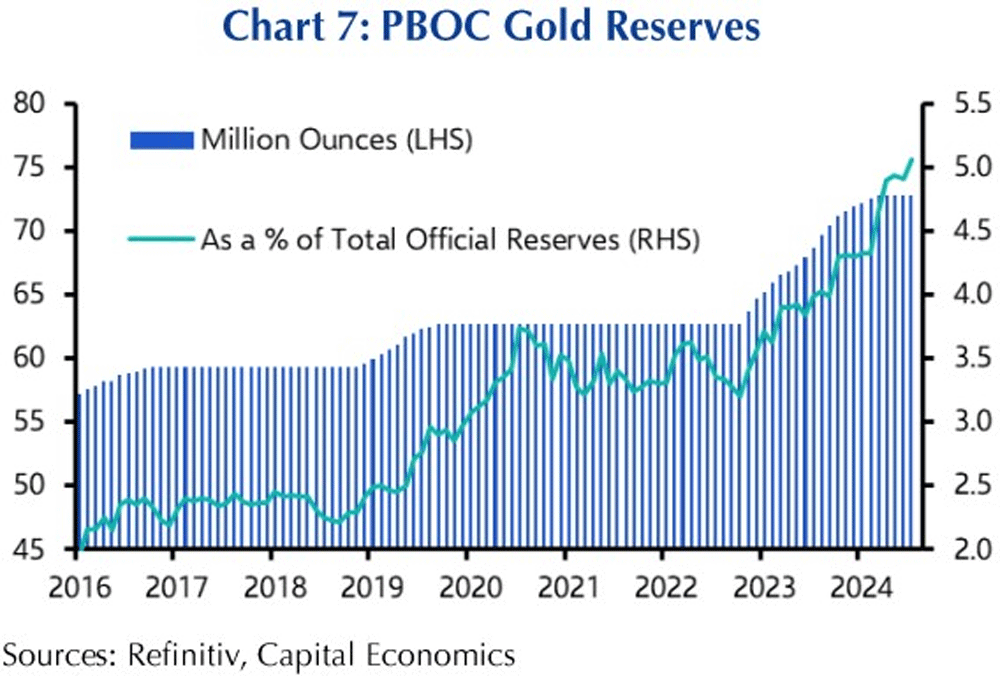
Moreover, the surge in demand for non-physical gold assets such as gold ETFs and gold futures contracts appears to have fueled the gold rush in China.
This type of demand accounts for a much smaller portion of total gold demand (in all forms) in China than in the West, but the level of inflows into China-based ETFs has offset outflows from North American-based ETFs as seen during the February-April rally.
Although China is expected to increase gold purchases over the next decade, according to Capital Economics experts, in the short term, the PBoC may continue to stop buying gold to wait for gold prices to adjust from recent record highs.
High gold prices have reduced demand for gold jewelry, the Chinese stock market has declined deeply and when it recovers, it will attract cash flow... Along with profit-taking pressure, all are putting pressure to stop the increase in gold prices.
However, all this is only short-term. China's economy is expected to weaken significantly, mainly due to losses from the crisis in the country's real estate market.
In the long term, Chinese demand for gold is expected to increase sharply and put significant upward pressure on prices for the rest of the decade. China will find it difficult to delay its economic stimulus measures for long. When money is pumped out, gold will be a safe haven.
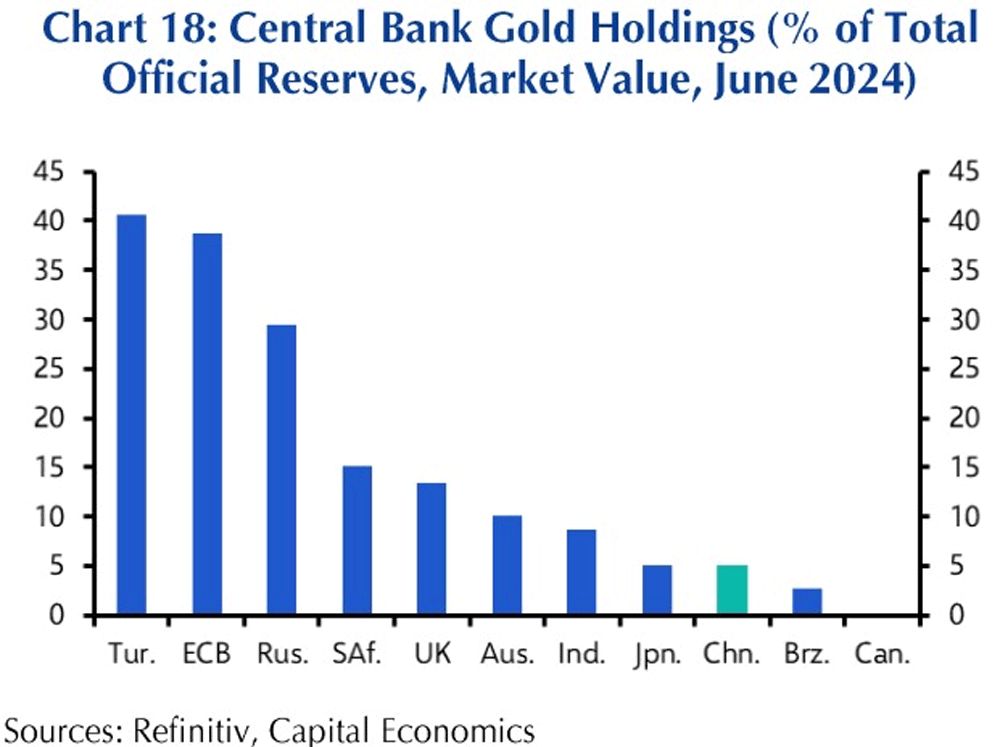
It is worth noting that the PBoC’s gold holdings in China’s total national reserves are quite low, only about 4.9%, while the country is implementing a strategy to reduce its dependence on the USD. If the gold holdings were raised to 10%, China would have to import about 2,250 tons of gold, equivalent to about 170 billion USD.
If China imports the above amount of gold in 10 years, the PBoC will buy 225 tons/year. In 2023, the PBoC also bought 225 tons of gold, the most in at least 46 years. The PBoC's strong net buying in 2023 is considered the main reason for the continuous increase in gold prices and setting many new records since the end of 2023 until now.

Source: https://vietnamnet.vn/ca-map-chay-dua-mua-vao-gia-vang-leo-thang-trong-thap-ky-toi-2316991.html




![[Photo] Closing of the 11th Conference of the 13th Central Committee of the Communist Party of Vietnam](https://vstatic.vietnam.vn/vietnam/resource/IMAGE/2025/4/12/114b57fe6e9b4814a5ddfacf6dfe5b7f)

![[Photo] Overcoming all difficulties, speeding up construction progress of Hoa Binh Hydropower Plant Expansion Project](https://vstatic.vietnam.vn/vietnam/resource/IMAGE/2025/4/12/bff04b551e98484c84d74c8faa3526e0)














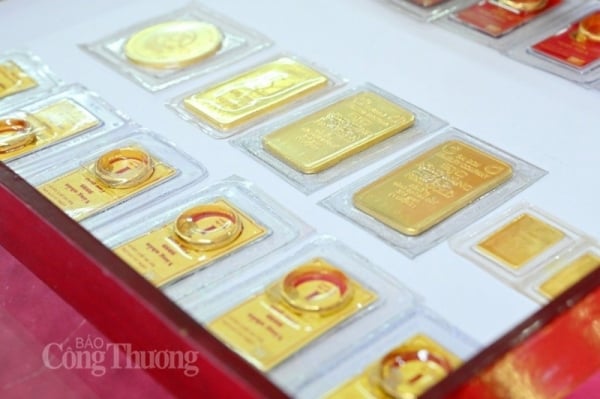




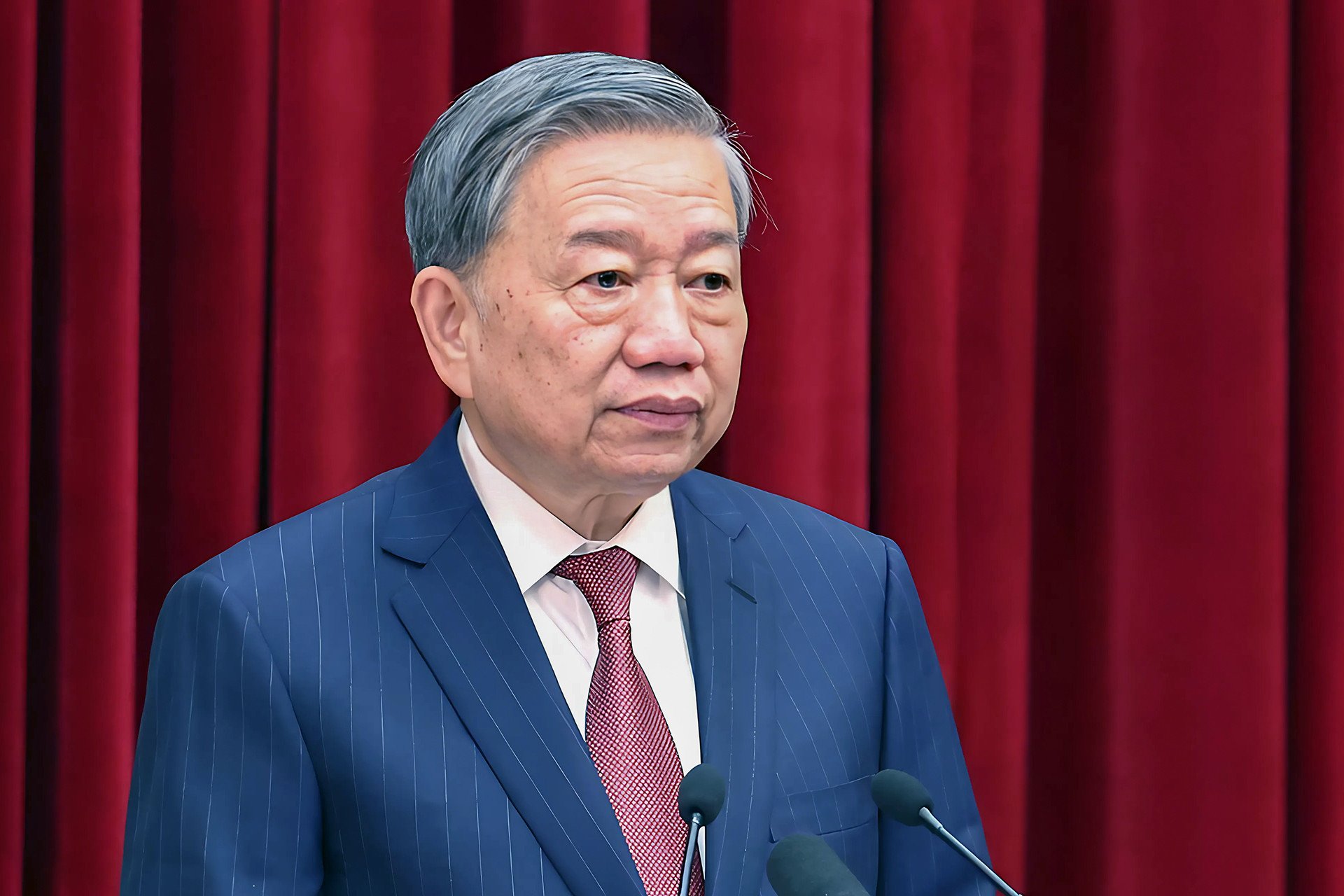

































































Comment (0)